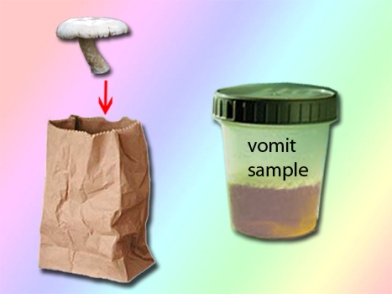Interactions
Amanita bisporigera forms an important relationship with the roots of trees found within the area. This interaction between the fungus and plant happens to be called a mycorrhizal relationship. This relationship is mutualistic in nature, meaning that both organisms benefit. The fungus gains important nutrients, usually in the form of carbohydrates, and the plant is able to absorb and take in nutrients and minerals. The fungus helped to enhance the plants ability to absorb these nutrients, and in some cases, depending on the environment and conditions, the plant depends on the fungus entirely to facilitate the uptake of nutrients.
Here is a video that helps to explain how fungus can help plants with better absorption of nutrients.
Amanita bisporigera also can have negative interactions with organisms. The toxin is poisonous to many different organisms, which
can deter predators or organisms that would like to use it as a food
source. When humans ingest this mushroom, death is the final outcome
without medical intervention. The high toxicity leaves little
options for culinary uses. One positive use for this organism may be
for the breaking down of certain substrates because of the role of
decomposer it plays within an ecosystem.
As stated in the paragraph above, Amanita bisporigera serves as a decomposer in many woodland ecosystems. Primarily, it breaks down dead, decaying organic matter. Along with other types of fungi, it can break down decaying or rotting wood. Without these fungi and other decomposers, our earth would be buried in tons of dead organic matter.
Even though lunch looks extremely appetizing, this wouldn't be a mushroom you would want to add to your culinary dishes due to the fatal interaction it has with humans.
Here is just one of the negative interactions Amanita bisporigera will have with your body.
Source of Image: Go to Aid
Continue to learn some interesting facts about this organism.
